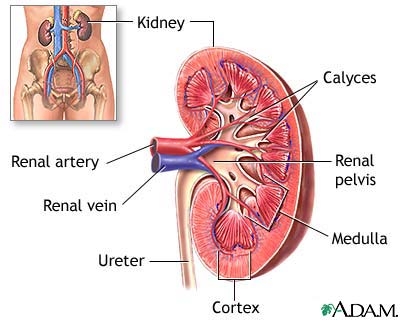Definition
Ureteropelvic junction (UPJ) obstruction is a blockage in the area that connects the renal pelvis (part of the kidney) to one of the tubes (ureters) that move urine to the bladder.
Overview, Causes, & Risk Factors
UPJ obstruction generally occurs when a baby is still growing in the womb. This is called a congenital condition (present from birth). Most of the time, the blockage is caused when the connection between the ureter and the renal pelvis narrows. This causes urine to build up, damaging the kidney.
The condition can also be caused when a blood vessel is located in the wrong position over the ureter. In older children and adults, UPJ obstruction can be due to scar tissue, infection, previous treatments for a blockage, or kidney stones.
UPJ obstruction is the most frequently diagnosed cause of urinary obstruction in children. It is now commonly diagnosed during prenatal ultrasound studies. In some cases, the condition isn’t seen until after birth. Children may have an abdominal mass or a urinary tract infection
The most severe cases of UPJ obstruction may require surgery early in life. However, the majority of cases may not require surgery until later in life, and some cases do not require surgery at all.
Pictures & Images
Kidney anatomy The kidneys are responsible for removing wastes from the body, regulating electrolyte balance and blood pressure, and stimulating�red blood cell production.
The kidneys are responsible for removing wastes from the body, regulating electrolyte balance and blood pressure, and stimulating�red blood cell production.
-
UPJ obstruction: Overview, Causes
-
UPJ obstruction: Symptoms & Signs, Diagnosis & Tests
-
UPJ obstruction: Treatment
Review Date : 2/9/2009
Reviewed By : Linda Vorvick, MD, Family Physician, Seattle Site Coordinator, Lecturer, Pathophysiology, MEDEX Northwest Division of Physician Assistant Studies, University of Washington School of Medicine; Louis S. Liou, MD, PhD, Assistant Professor of Urology, Department of Surgery, Boston University School of Medicine. Also reviewed by David Zieve, MD, MHA, Medical Director, A.D.A.M., Inc.
